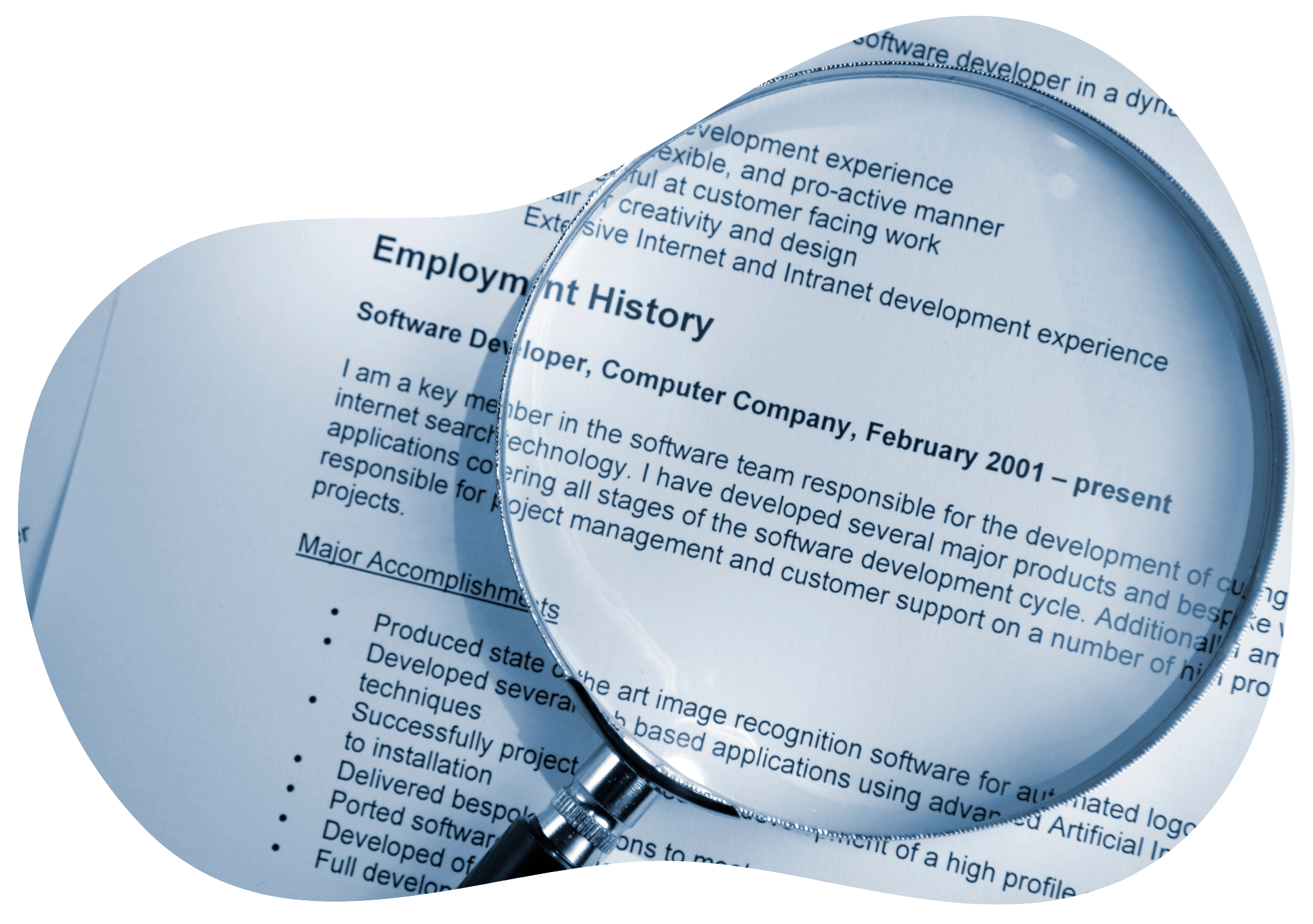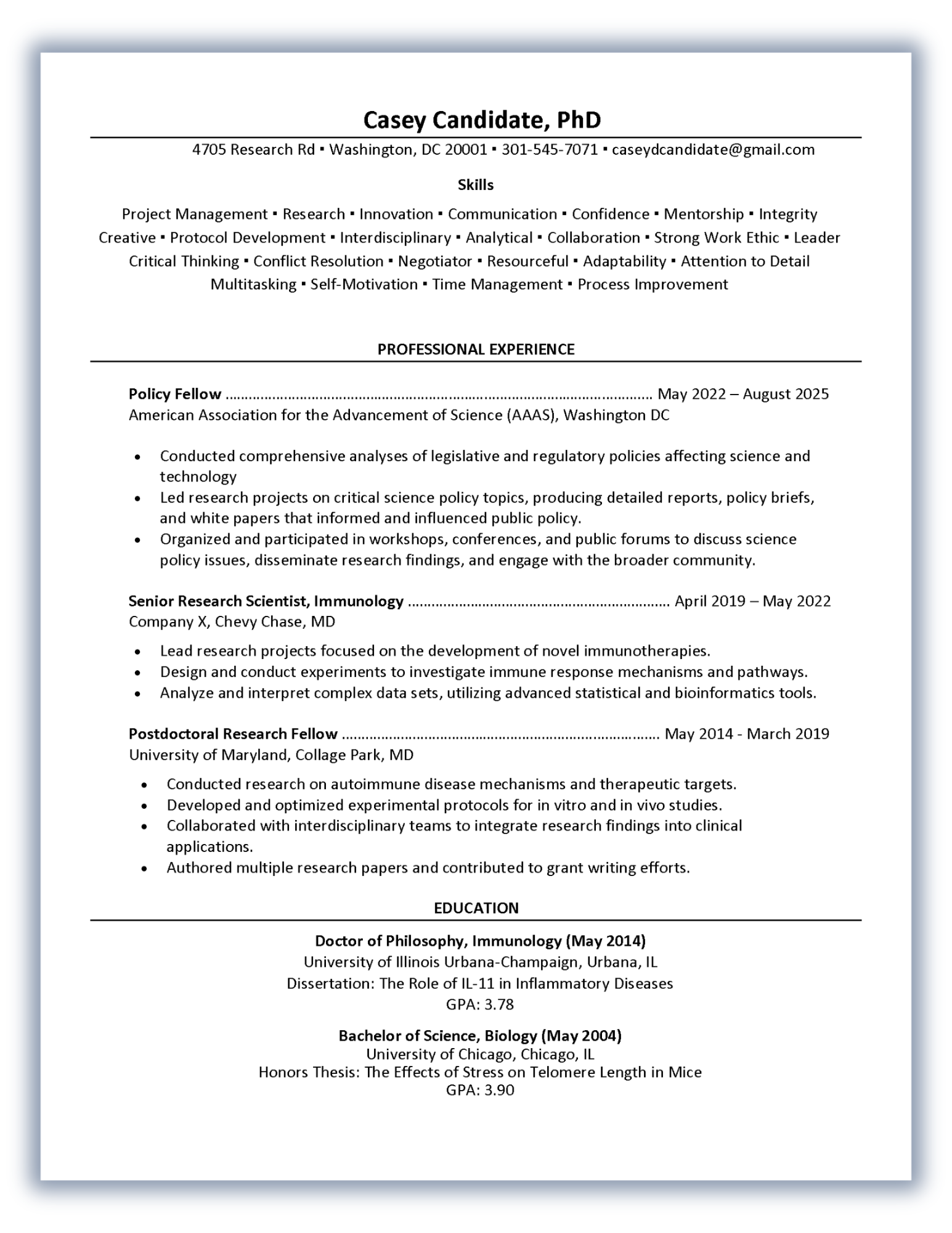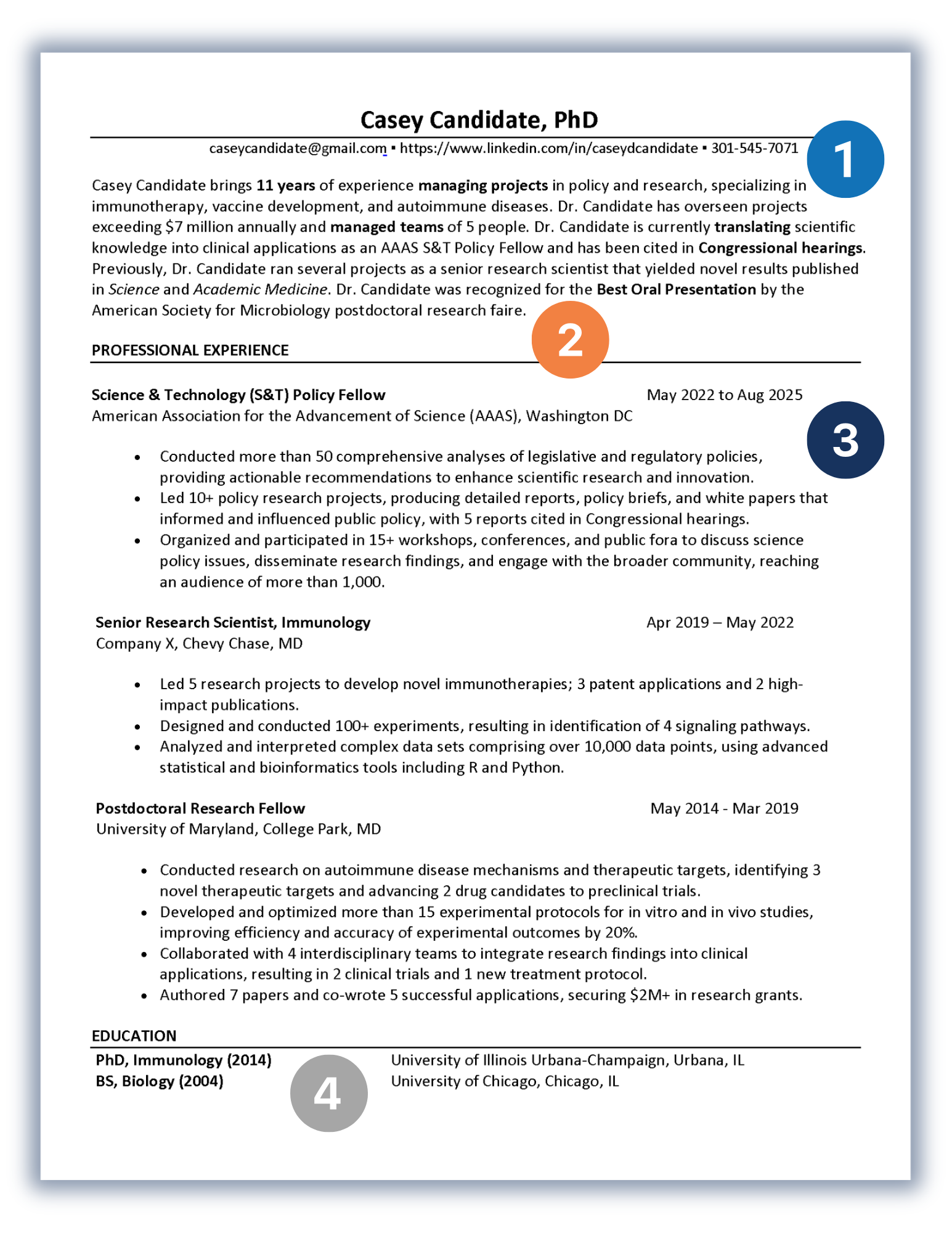Are you a federal employee or contractor who has recently been displaced from your position?
Ripple Effect is here to help! Federal Forward is an invite-only program to support you in securing a new position.
Fill out this short form to begin navigating your next career move.
Advance Your Career
in Government Contracting
At Ripple Effect, we aim to provide practical tips and actionable advice to help professionals work smarter and perform better. With over 20 years in business in the government contracting space, our team has honed strategies for tailoring resumes, mastering behavioral-based interviews, and building strong professional networks. This guide includes insights on common mistakes and best practices to assist in advancing your career in the healthcare and scientific fields.
Tailor Your Resume
Crafting a resume tailored to the specific job you are applying for is crucial. Start by focusing on the most recent and relevant skills and experiences that align with the job description. Incorporate keywords from the job posting to ensure your resume passes through automated screening systems and resonates with hiring managers.
Highlight Achievements:
Detail your accomplishments and illustrate how your contributions positively impacted the project or company. Use specific facts and figures to quantify your impact, making your resume stand out.
Maintain a Master Resume:
Keep a comprehensive resume with all your experiences. This master document can be a valuable resource for tailoring your resume to different job applications.
Organize Strategically:
Adjust the order of resume sections based on what is most important for the role. In some cases, highlighting education first is beneficial; in others, placing it at the end is more appropriate. Tailoring the structure of your resume can enhance effectiveness.
Below are two example resumes. One represents a typical format, while the other has been enhanced to stand out from the competition. Please reference the endnotes in the second version to see how the resume has been effectively improved:
Keep your resume brief and tailored to focus on the details most relevant to the job you’re applying for. The professional summary and experience sections should be customized to use the same words as the job description to clearly communicate why you’re the best fit for the position.
![]()
Personal Information:
Avoid including your home address for security reasons; it’s no longer required. Instead, mention your general geographic location if relevant for relocation. Including your LinkedIn profile is a good way to provide additional professional context and keep your resume modern and concise.
![]()
Professional Summary:
Skip the long list of skills and instead, write a focused professional summary. Highlight your years of experience, area of expertise, and key strengths that make you a standout candidate. Include awards and areas of outstanding impact.
![]()
Experience Section:
Quantify your achievements wherever possible to illustrate your impact. Specific metrics and data points make your contributions clearer and more compelling, helping to showcase the value you’ve brought to past roles. Remove extraneous words and filler marks.
![]()
Education Details:
There’s no need to include the month of your graduation, thesis titles, or GPA in the education section. These details are more suitable for a CV.
Master Behavioral-Based Interviewing
Behavioral-based interviewing is a technique that asks candidates about their past behaviors in specific situations to predict future performance. These questions are designed to truly understand your skills and assess if you’re a good fit for the role.
Identifying Questions:
Detail your accomplishments and illustrate how your contributions positively impacted the project or company. Use specific facts and figures to quantify your impact, making your resume stand out.
Effective Responses:
- DO: Share a specific story detailing your actions and outcomes. Start with context, e.g., “In one of my previous roles…”.
- DON’T: Offer philosophical views or general practices without providing specific examples relevant to your experience.
Why Employers Use It:
This method provides a deeper understanding of a candidate’s capabilities compared to traditional questions.
Candidate Benefits:
Stories are memorable and compelling, showcasing technical skills and traits like resilience and flexibility. They help interviewers better understand your strengths.
Handling Sensitive Examples:
Describe scenarios without revealing classified or proprietary details. Focus on the actions and outcomes rather than specific names or sensitive information.
Preparation Tips:
- Develop and practice stories from past roles.
- Use stories to answer questions, even if they aren’t explicitly behavioral.
- Take your time to think by repeating the question or pausing.
- Highlight your impact, such as solving problems or saving resources.
- Tailor your stories to align with skills in the job description.
Keep in Mind:
Even if not directly asked behavioral questions, you can use storytelling to make your answers memorable and impactful.
Below are four examples of behavioral-based questions with standard responses followed by enhanced responses, illustrating how to effectively improve your answers for greater impact:
Tell me about the most difficult budget you've managed.
- Standard Response
“There were so many parts to this data center move that I didn’t know how to manage it. So, I just had to make changes over time and stick to the budget. I kept the budget organized and I saved money on the project.” - Perform Better Response
“For a data center move, we had slotted a role for an engineer but once we started doing the work, I realized we needed a SME instead. But I had to convince the contracting officer to allow me to use the SME on the project, so I proposed the SME on an hourly basis, which was accepted by the client. This changed the budget from our original proposal, which I had to manage by decreasing hours for the engineer. I had many substitutions like that over time where managing the staff on the project didn’t align to what we originally expected or proposed. Each time I provided the justification to the project officer and over time they got more and more used to my suggestions. They realized that I was able to assemble the team to get the work done and could keep the budget on track too.”
Tell me about a time you developed a new process for your team based on a trend you observed.
- Standard Response
“As an engineer, I do this all the time. I like reviewing code to understand where people can go wrong, and I usually use my code reviews to implement new processes.” - Perform Better Response
“As the engineering lead, I noticed that we were getting frequent requests for what appeared to be new projects, but in actuality were for projects that had recently been coded and delivered. I was concerned that the completed projects weren’t being done properly and so I instituted code reviews among the team members. Under the new process, every engineer on the team had to get their code reviewed by someone else on the team before they could return it to the requestor. As a result, the quality of the coding increased, and we stopped receiving second requests for the same project. Ultimately my new process saved time and money for the company.”
Tell me about a specific time that a team member let you down or didn't complete a task on time.
- Standard Response
“I don’t have an example, but I am a very patient person who is clear in my communication. I know there can be a difference sometimes between intent of the message and how it is received so I always take the time to ask people for their feedback and that is how I move things forward. It’s my responsibility to deliver the program and I know that all of the colleagues work together in a team effort to get things done.” - Perform Better Response
“I don’t have an example where someone let me down, but I can share an example where I adjusted my approach to help someone who likely would not have been able to complete their tasks on time. In this case, I was working with an admin assistant who was new to the team. We were in the middle of the award program, which is a stressful time because any delays trickle down to create longer delays on other important tasks that were contingent on that process being completed. The new person lacked the background knowledge to perform the tasks efficiently and on time, so I had to step in and guide them. I just put myself in the new person’s shoes and looked at everything from their perspective. I set up a meeting with the new person, provided them with documentation and training on the processes and made sure that they were clear on all the instructions. I scheduled regular check-ins with the new employee every two days so I could provide feedback and oversight to move things forward. Since I know it is my responsibility to deliver the program, I took these steps to pre-empt any issues I was expecting with the new person. They were able to be a productive member of the team with my help, and we avoided a let-down situation.”
Please provide an example of when you had to assign tasks on a project and how you determined who received them.
- Standard Response
“In delegating tasks, I would first try to get an understanding of the team, their dynamic, and their typical roles. I like to assign tasks that play to people’s strengths, and I take time to evaluate who would be best suited to take on the task. Before assigning tasks, I have a conversation with the person to see what their current workload is, and if they have the bandwidth for it. If not, I will look at the person’s current tasks to see what their priority items are and where they can be reassigned to open up the space for other tasks.” - Perform Better Response
“[Add this to the end of the previous statement] For example, on a particularly time-sensitive project, I was stressed about how we would get it all done. I knew there were some things that would require a lot of training to be done properly so I started thinking about whether I knew anyone with the right skills that I could bring onto the project. Because of my tendency to know everyone’s strengths, I knew there was a person had a strong knowledge of Microsoft Word and I also knew they were available (underutilized and looking for more projects). So, I assigned them a task based on mail merging many fields together into one list, and it was a success! They got it done quickly and accurately, and this allowed the other people on the project to keep moving forward with their tasks without having to learn mail merge. In fact, because we used the skills from the Microsoft Word expert, we were able to do the work faster than the expected timeline and we met the deadline early. It was a win-win for everyone.”
Connect with Your Networks
Understanding the landscape of government contracting can open up significant opportunities, especially for consultants and small businesses.
Government Contracting Insights:
Government agencies often use contractors to access specialized expertise and expedite projects. Research each agency’s unique needs and missions to tailor your approach. Familiarize yourself with contracting terminology, including the distinctions between consultants and contractors.
Build and Nurture Networks:
Developing a robust professional network is vital. Engaging with colleagues and industry peers can lead to new opportunities, partnerships, and collaborations. A well-maintained network can be a key asset.
SHPCC Initiative:
Recognizing the challenges faced by sole proprietors and boutique micro-businesses in navigating government contracting, Ripple Effect has established the Science and Health Policy Consulting Consortium (SHPCC). This initiative fosters a community of independent consultants specializing in science, science policy, and health policy, providing support and resources to help them succeed in the contracting environment.

































